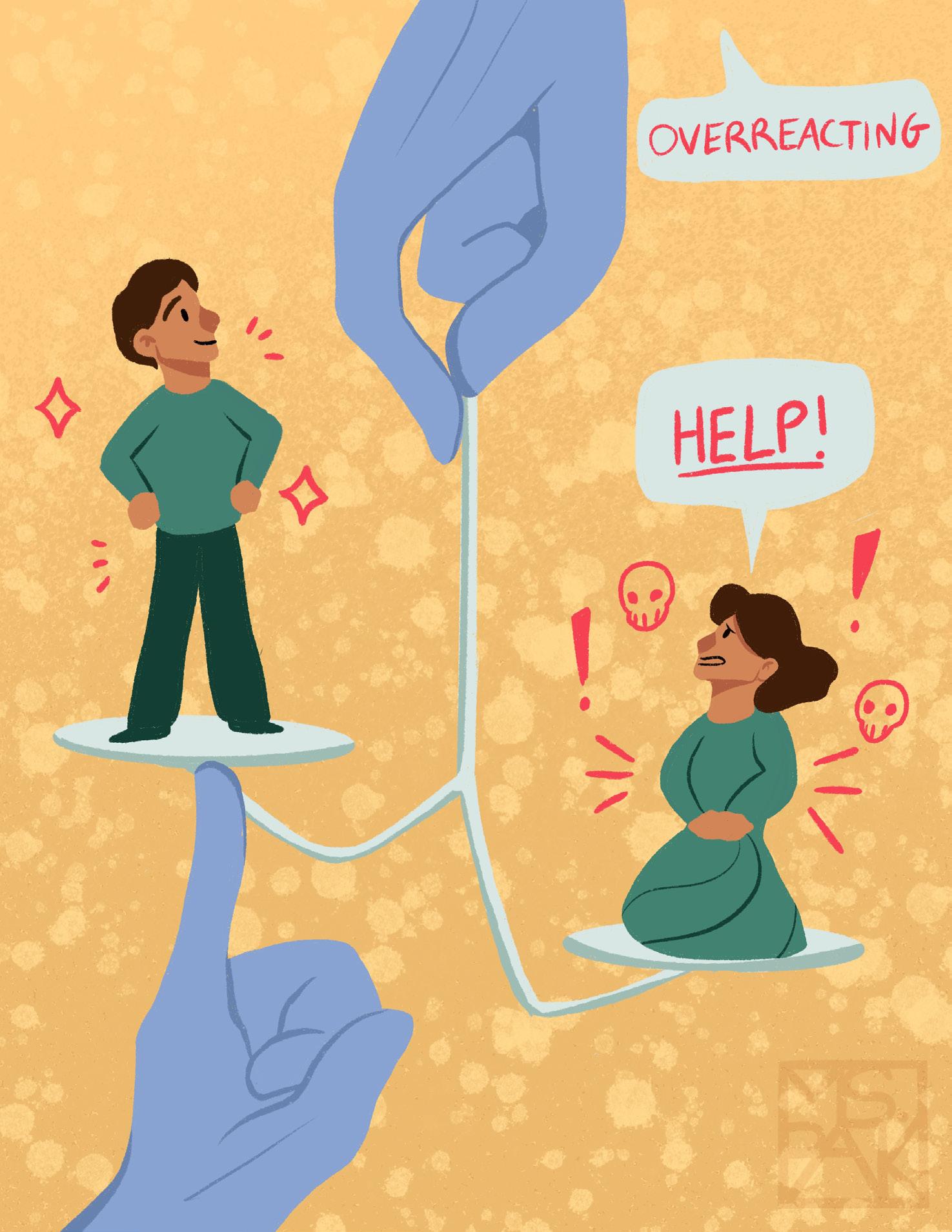
4 minute read
The Negative Effects of Gender Bias in Health Care
Writer: Lily Luu • Editor: Sophia Xiao
Throughout history, women have been victims to implicit bias in medical diagnosis, treatment and care. This bias has made its way into the examination room, where women are less likely to be diagnosed with a non-psychosomatic illness, have their pains treated and have their symptoms be taken seriously compared to men [8]. There exists a number of contributors to the health disparities and gender biases experienced by women today, including the controversial history of “female hysteria” and women being excluded from clinical trials until the early 1990s. Instead, the majority of medical treatments and diagnosis have been based on males, specifically a 75-kilogram white male [2].
Advertisement
Legal Explanation defines gender bias as the “prejudice in action or treatment against a person on the basis of their sex,” which can contribute to disparities in medical assessment, diagnosis and treatment [7]. For example, men and women are treated differently in healthcare, from their pain to medical diagnoses. One study found that in the emergency department, “women who report having acute pain are less likely to be given opioid painkillers” (the most effective type) than men [1]. Even though women report experiencing more frequent and severe pain levels, research shows that physicians prescribe fewer pain medications to women than men after surgery [5]. Through her studies, Dr. Esther Chen suspects that doctors are less likely to prescribe opioids to women present in the emergency department with abdominal pain due to the assumption that women with abdominal pain have gynaecological problems rather than acute surgical disease [1]. The tendency to connect women’s physical complaints to the female reproductive system and mental illness dates back to the phenomenon of “female hysteria.” This commonly diagnosed female “disorder” during the 18th and 19th centuries blamed the “wandering womb” or sensitive nerves for causing illnesses experienced by women and later became perceived as a psychological problem [4]. Although “female hysteria” might be controversial today, its history and attitude towards women and their physical pain still lingers through the gender bias that exists in today’s health care.
Even before receiving a diagnosis, women already experience disparity in the waiting room. A study from the University of Pennsylvania found that women waited 16 minutes longer than men before receiving pain medications when they visited the emergency room [3]. Additionally, a 2014 Swedish study reported that women’s cases were classified as urgent less often [10]. This bias can be lethal and has led to numerous diagnostic errors and unnecessary deaths. Each year, an estimated 40,000 to 80,000 people die due to diagnostic errors in the United States alone [4].
This bias can be lethal and has led to numerous diagnostic errors and unnecessary deaths. Women’s physical complaints have not been taken seriously and instead, are too often written off as psychiatric.
Women experience having their pains dismissed and having to make multiple visits, sometimes with different doctors, before receiving a diagnosis. The Brain Tumor Charity released a report in 2016 on the treatment of brain tumor patients in the United Kingdom and found that women were less likely than men to receive an immediate diagnosis, with many having to make over five visits before obtaining one [11]. In the same report, a 39-year-old woman shared how she was made fun of by doctors who sarcastically asked if she thought her headaches were caused by a brain tumor. She had to request a referral to neurology, and even then, had to make repeated visits just to be prescribed antidepressants, sleep charts and analgesia, none of which were helpful [4].
Women’s physical complaints have not been taken seriously and instead, are too often written off as psychiatric. Maya Dusenbery’s book “Doing Harm” includes personal stories from women across the United States to look at how sexism in medicine harms women today. Jackie, a woman whose story is told in “Doing Harm,” suffered from chronic kidney problems, fever fatigue and terrible menstrual and joint pain. She went to see a primary care doctor, a urologist and a pulmonologist, but in the end, was diagnosed with depression and prescribed with unhelpful antidepressants [4]. The Chronic
Pain Research Alliance’s co-founder and director, Christin Veasley, stated that “women have been more often referred to psychologists or psychiatrists, whereas men are given tests to rule out actual organic conditions” [1]. Veasely recounted women’s alarming stories of doctors’ advice, ranging from their diagnosis being caused by marital problems to having wine before sex to make things better [1].
Gender bias in health care needs to be recognized and addressed. In the modern day, closing the gender gap in health care and alleviating gender biases are crucial to assure all patients receive the right medical care and are treated with respect. Some ways to help eliminate the existing gender bias include educating clinicians to increase their awareness of their own biases, diversifying health care teams, having checklists and guidelines to standardize patient evaluations and including more women in clinical trials for a more proper representation of women in medical research [6,9]. Being able to recognize that gender bias still exists in health care today is an important first step, but there is still more that needs to be done. •








